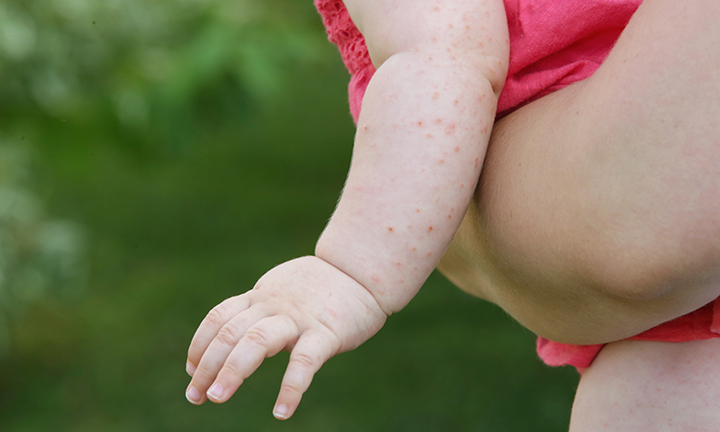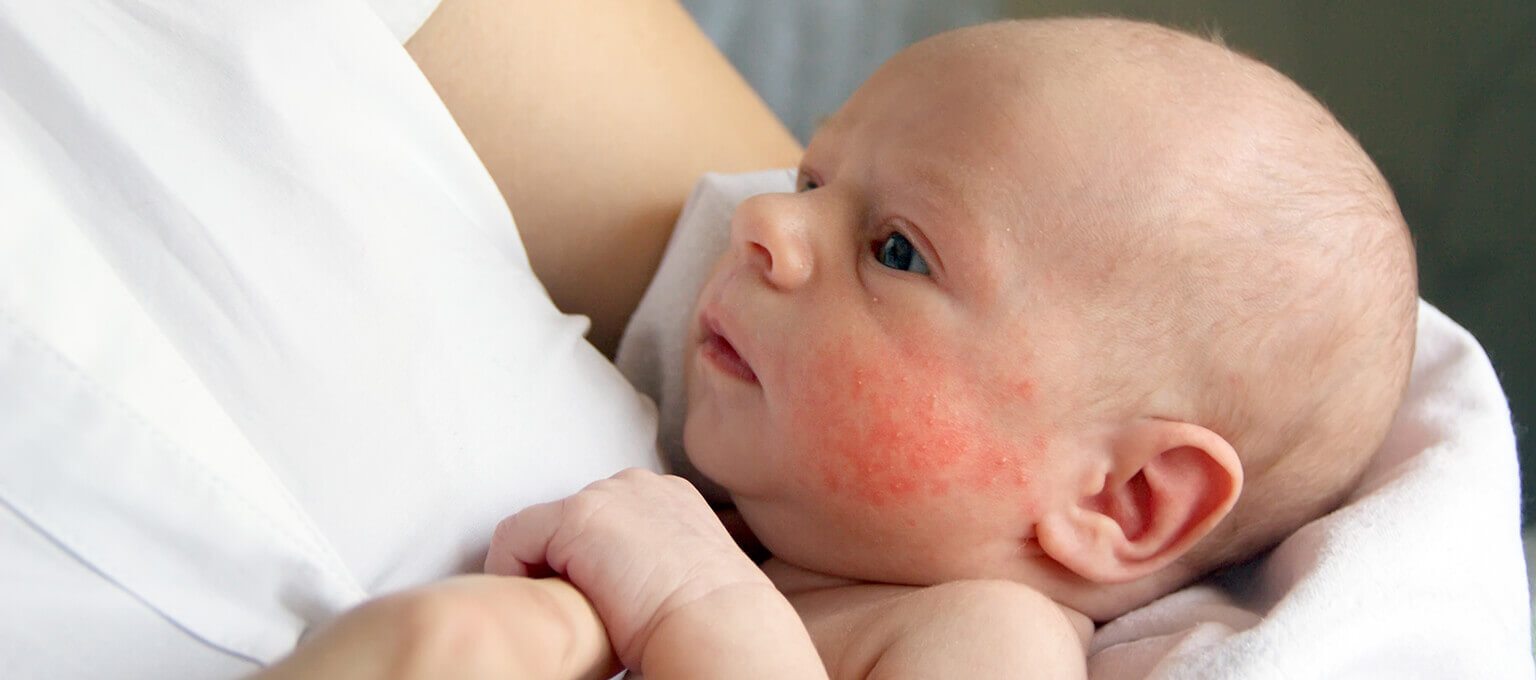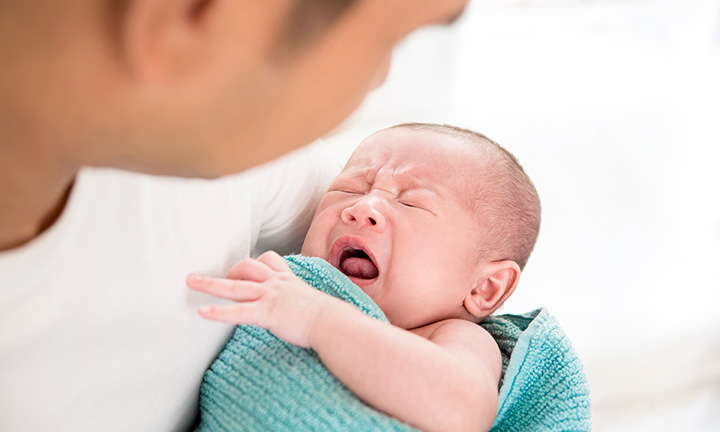
Roseola: Signs, Symptoms and Treatment
3 min readUpdated November 27, 2025
3 min readUpdated November 27, 2025
Key Takeaways
Roseola is a common and generally mild viral illness that can affect babies and toddlers. It’s sometimes called sixth disease or roseola infantum, and it’s usually not something you need to worry too much about.
Roseola typically causes a few days of fever that’s sometimes followed by a roseola rash, but in mild cases, your child may not have any symptoms at all.
Read on to find out more about what roseola is, learn about the symptoms and get some tips that will help you assess whether it’s time to visit the doctor.
What Is Roseola?
Roseola is a viral infection caused by two common strains of the human herpes virus. Babies and toddlers are at the greatest risk of contracting roseola because they have not yet built up antibodies that help fight the viruses that can cause it.
Older children and adults can also get roseola, but this is rare because most people have it as children before starting nursery school, and it’s very unusual to catch it twice.
The rash and other roseola symptoms might alarm you at first, but don’t worry – if your child comes down with roseola, they will usually be back to normal within a week or so.
The Symptoms of Roseola
If your child has roseola, it can take one or two weeks for visible signs to appear. Although it's possible you’ll see no symptoms at all, some of the first symptoms to appear could include:
The Roseola Rash
After 3 to 5 days, the fever and other symptoms described above (if your child has any) will usually clear up, and a roseola rash may appear.
The roseola rash looks like a cluster of pinkish red spots, patches or bumps, and may be harder to see on darker skin tones. The rash may start on your child’s chest, back and abdomen, and it can then spread to the neck, face and arms.
It may look a little scary, but the rash isn't normally itchy or uncomfortable, and it usually fades away within a day or two.
The rash caused by roseola should fade if you roll a glass over it. If it doesn’t, seek urgent medical attention for your child as this could be a sign of meningitis.
How to Care for Your Child Who Has Roseola
Roseola usually clears up by itself within a week after the symptoms start appearing. There’s no special treatment for roseola, but there are some things you can do to look after your little one while they are feeling poorly:
When to See a Doctor
Roseola usually disappears on its own, but see a doctor straight away if your child
Is Roseola Contagious?
Roseola is contagious. It can spread in the same way as a common cold – through saliva (for example, by sharing a cup with someone who is infected) or through respiratory droplets (so through coughs or sneezes).
Experts aren’t sure exactly when the contagious period starts, but it may be possible to spread the disease before any symptoms appear.
To try to help prevent your child from getting roseola, keep them away from people you know are infected.
To avoid your little one spreading roseola
The Bottom Line
Like many common childhood sicknesses, roseola is not usually anything to be worried about, and it’s unusual for roseola to return if your baby or toddler has had it once.
A little home care is usually all that’s needed, and your child will be their old self again before you know it.
If you haven’t already, download the Pampers Club app to earn rewards and discounts on all your Pampers purchases.
How we wrote this article
The information in this article is based on the expert advice found in trusted medical and government sources, such as the National Health Service (NHS). You can find a full list of sources used for this article below. The content on this page should not replace professional medical advice. Always consult medical professionals for full diagnosis and treatment
Read more about Baby
Related Articles
Join Pampers Club and get:














